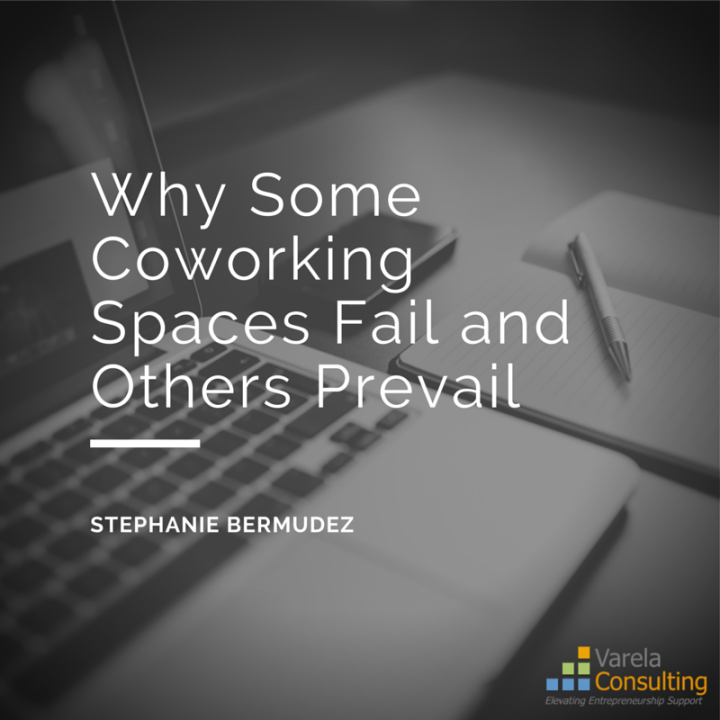Why Some Coworking Spaces Fail and Others Prevail
The coworking movement is booming. About ten years ago, corporations began to downsize and allow employees the flexibility to work wirelessly from anywhere in the world. Independent workers then found themselves dealing with isolation, loneliness, and a lack of stimulation in their home offices, so they sought out workplaces where they could benefit from the camaraderie, collaboration, inspiration, safety, and opportunities to grow their businesses that well-designed and managed coworking spaces provide.
These spaces are no longer just for freelancers, nomads, telecommuters, misunderstood corporate refugees, or start-ups. Both individual “solopreneurs,” and entire innovative companies are discovering the progressive advantages of coworking, which include networking, business referrals and expansion, and building life-long personal and business relationships.
Today, coworking spaces exist worldwide. An estimated four new spaces open up each day, adding to the 6,000-some existing spaces—but unfortunately, these spaces close at about half that rate too. Something is obviously going right for the spaces that prevail, and wrong for the ones that fail. Perhaps many were based on the premise, “Build a fun and funky space and they will come.” Important factors have been overlooked in the construction and management of the spaces that have not succeeded.
Globally, we could likely benefit from the existence of many more of these shared spaces, as they are radically altering the concept of the plodding nine-to-five job for thousands of people. Ideally, millions would be able to take advantage of the many benefits offered by coworking.
From my experience and research, the effective development of a coworking space involves working in a beta space for six to twelve months, which permits for organic growth and development and allows for continuing research, occupant feedback, holding focus groups, tracking metrics, and connecting the space with external communities like universities. Beta spaces are temporary pop-up locations and serve as a great place to make small or large mistakes on a manageable scale.
In addition to the necessity for beta space, there are four major keys to success in a coworking space:
Environment
Anyone who’s been in a well-designed space will agree that the moment they walk in, there is an instant connection–or lack of connection–to the rooms. Recent studies have proven that people judge their physical environment within the first twenty seconds after entering it. Emergent research at the 2015 Global Coworking Conference Unconference revealed that, “Even in the context of talking about facilities and infrastructure, the data is clear: People value human space far above office space.”
The following factors contribute greatly to the efficiency and functionality of a coworking space:
- Location: High density urban spaces are more successful than those in rural areas.
- Building: The building should be in very good condition, easily accessible, provide plenty of parking, and preferably feature tenant-designed improvements.
- Infrastructure: The materials in the space must work as intended. They need to be able to absorb sound and balance energy. Consider too how certain materials may affect communication signals that are vital for today’s daily work activities.
- Layout: Keep in mind extroverts, introverts, and spaces where spontaneous meetings may occur. Plan for plenty of lounging around, informal meeting spaces, and private spaces.
- Furniture: Must be functional and of commercial grade. Ergonomic design concepts are becoming increasingly more popular and available.
- Equipment: Don’t overdo it, and don’t over-promise and under-deliver. Do your homework. Every space will have unique needs, so consider your infrastructure and work with certified network providers who are willing to coordinate with your local providers and vendors.
- Sound Levels: Location, the building itself, layout, and furniture selection all play a part in the sound levels produced. Focus more on dispersing noise rather than trying to enclose it.
Authenticity
- Get to know your members on an intimate basis, and create authentic relationships with them. Understand your members, and their available markets. They are most likely seeking meaningful relationships and personal and business transparency themselves.
- Be your own true self. Look beyond yourself and pay close attention to others and their needs.
- Stand out by combining what you know about your customers and your business and what you have learned from your own extensive experience. The choices you make concerning the environment, leadership, and the foundation you lay at beta for organic community growth all feed into genuine authenticity.
Leadership
Leaders are the ones who control, guide, and make extensive improvements to the environment. True leaders control what Simon Sinek refers to as, “The circle of safety.” The leader(s) of a coworking space must belong to the community, and lead through inspiration by setting examples of creativity, total integrity, and transparency. The members have to feel that the leadership serves them in order for them to choose to stay and, ultimately, to promote the space, its constituents, the vision, and the leaders.
Leaders are responsible for everyone’s sense of safety and connectedness: the community managers, the volunteers, the members, and the local representatives. Everyone plays a different role, but all support the space for the same reasons. Real estate-centric coworking spaces, by contrast, are about selling desks first, with good leadership and building community as only a secondary goal. Well-led, community-powered coworking spaces usually start with a community, not a space.
In the course of further development of this community, “champions” begin to emerge. These are usually members who become truly enthusiastic supporters of the concept of coworking in general, and their own coworking space in particular, who promote the space heavily and get involved in the day-to-day decisions about design and operation of the business. Champions can be groomed to become management, or even owners.
Community
Initiating, fostering, and nurturing a coworking community is an opportunity to bring a roomful of people together personally in our digitally-connected world. Everyone involved should feel a special sense of belonging to the whole, regardless of their backgrounds, their special areas of expertise, and their individual goals.
According Alex Hillman of Indy Hall, coworking space failures often have more to do with the failure to build community than space owners or managers care to admit. “The truth is that for every failure I’ve seen that blames it on some external factor, I’ve seen spaces succeed with those same external factors because they got the community part right.”
Coworking is more than the real estate and more than strong individual brands. Coworking is community. Coworking spaces allow people to connect, be more productive, collaborate, and be the happiest they’ve ever been while working, and this is what ultimately is making the movement accelerate so rapidly. These qualities are easily copied and have been copied by thousands.
Though many have tried to replicate the coworking experience, few have truly succeeded for one simple reason: The spaces alone are not what make coworking special. Coworking has evolved into something much more than space and connections. It represents idealism. A good coworking space is for those who long to be a part of a community that envisions a brighter and more productive world than today’s, a world in which big ideas and big global changes can evolve!
Number of Coworking Spaces Has Skyrocketed in the U.S.
1320 Coworking Spaces Worldwide
Coworking – Not Just For Early Adopters Anymore
Coworking: Any old spot won’t do
Leaders Eat Last: Why Some Teams Pull Together and Others Don’t by Simon Sinek (Book)
Coworking by the Numbers – The Results of the 2015 GCUC/Emergent Research Coworking Survey
Jacob Sayles Office Nomads, Seattle, Washington





Great article!
I am doing research on coworking and would like to have a short interview with you. Thanks.
Stephanie
I would add one more item, although perhaps more rare: big C Community Culture.
Our C4 Workspace in San Antonio TX opened 6 years ago and close after 2.5 years from lack of local interest. I’ve had the conversations with Alex H. about creation of space community. But we did everything else you listed relatively well and couldn’t get people in the door. And no other coworking space has opened in San Antonio since closed in the fall of 2011.
Your city has to have a culture of bottom up individual sharing, innovation and imagination before a space works.